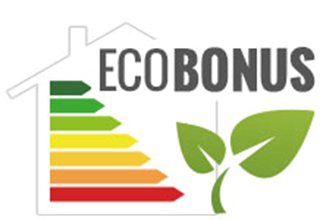Ecobonus 2019: requirements, amounts and how it works
- June 24, 2019
- Posted by: sagest
- Category: Blog

Ecobonus 2019, a complete guide to the 50 or 65 percent deduction for energy-saving work, with a list of eligible expenses and the steps required to claim the Irpef bonus.
The 2019 Financial Maneuver extended the deductions for energy efficiency work (Ecobonus). Substantially confirmed for 2019 the deductions for energy-saving interventions: therefore, the differentiated rates of 50 percent and 65 percent remain, depending on the type of work. Confirmed, therefore, the lower rate for new windows and doors and replacement of air conditioning systems with condensing boilers. Confirmed for one year the deduction for solar screens at 50 percent, that for thepurchase of pellet boilers or air conditioners.
Ecobonus 2019: The deduction for energy-saving work is one of the most important benefits for those who carry out work in their homes. Thanks to the energy-saving bonus, taxpayers can takean ecobonus deduction of50 to 65 percent of the expense incurred depending on the type of work performed. There are many who wonder how the 2019 ecobonus works and what expenses are eligible for IRPEF tax deduction. To benefit from the IRPEF rebate, specific rules and requirements must be met, including the ENEA reporting requirement. While waiting for further news, let’s take stock below of what the 2019 ecobonus is and how it works for home works aimed at energy saving, analyzing the instructions provided on the matter by the Internal Revenue Service.
In condominiums: the ‘Ecobonus provides a 65 percent deduction that can go up to 70 percent if it concerns the building envelope (the coat) and 75 percent if the certification proves the improvement of winter and summer energy performance. The Bonus is stabilized until 2021 and remains deductible over 10 years. The Ecobonus also applies to hotels.
The category “energy upgrading interventions” includes any intervention or set of interventions that affects the energy performance of the building. These interventions have access to a deduction of 65 percent of total expenses, with a maximum eligible limit of 100,000 euros. You can claim the deduction only for “existing” buildings and already equipped with a heating system. The intervention must: 1) ensure an energy performance index for winter air conditioning that does not exceed the limit values defined in Annex A of Ministerial Decree March 11, 2008; 2) comply with national and local laws and regulations on safety and energy efficiency.
Provisional and ancillary works functional to the implementation of the interventions and expenses for the necessary professional services, including the preparation of the APE, can be facilitated. The client will have to keep the “Descriptive Sheet,” the affidavit prepared by a certified technician with compliance with the technical requirements, and the APEs of each individual housing unit.
All taxpayers, including business income holders, are eligible for the tax breaks, as long as they are the owners of a property on which energy upgrading work is to be carried out.
